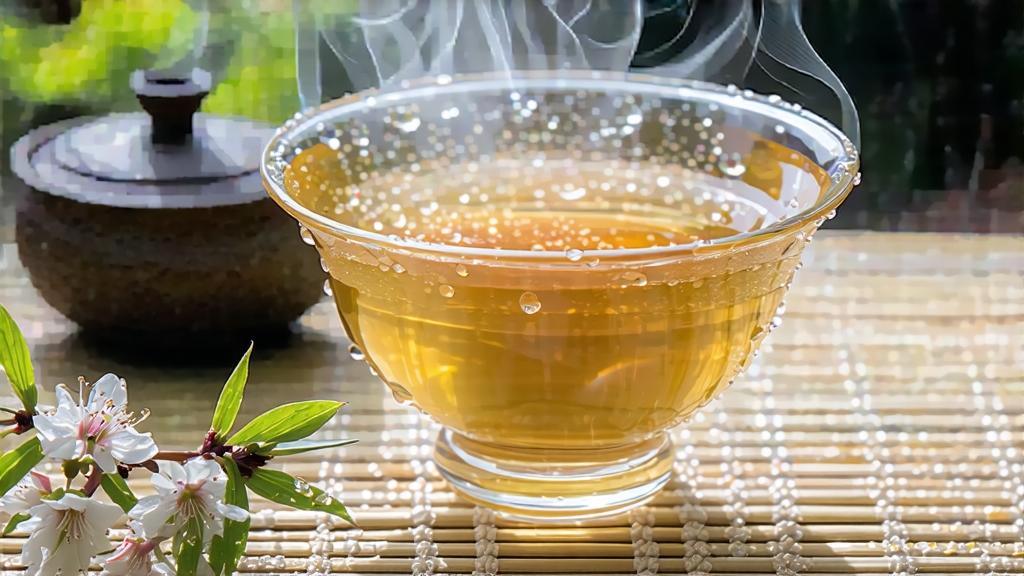
Among the six great families of Chinese tea, white tea is the least theatrical: no shaking in hot woks, no rolling until the leaves bruise and shout, no smoke or charcoal fire to stamp personality upon it. Instead it is a tea that believes in time, air, and the patience of weather. Within this quiet family, Bai Hao Yin Zhen—translated abroad as White Hair Silver Needle—sits at the apex, the purest expression of “less is more.” Every spring it reminds aficionados that delicacy can be more enduring than power, and that aroma can arrive on the palate as a whisper rather than a battle-cry.
Historical whispers
The written record of white tea stretches back to the Song dynasty (960-1279), when the imperial court demanded “white” tribute teas whose buds were so young they still wore a silvery down. Yet those Song cakes were steamed, pressed, and stamped with dragon motifs; they were not the loose, sun-withered Silver Needle we know today. The modern craft crystallised during the late Qing in Fujian’s northeast, where the port of Fuding shipped exotic goods to the West. European merchants noticed that the pale, needle-shaped buds resisted spoilage on long sea voyages and fetched extravagant prices in London and Amsterdam. By 1857 the local “Dabai” (Big White) cultivar had been identified as ideal for bud production, and Silver Needle began its slow journey from regional curiosity to global luxury.
Terroir and cultivars
Authentic Silver Needle is made only from the plump spring buds of two Fujian cultivars: Fuding Dabai and Zhenghe Dabai. The two villages—Fuding on the coast, Zhenghe in the misty interior—offer contrasting personalities. Fuding’s marine air gives buds a jasmine-like lift, while Zhenghe’s higher mountains and cooler nights build thicker cell walls, translating into a creamier texture and longer aftertaste. Purists will debate which birthplace is superior, but both must obey the same rigid plucking rule: one bud, no leaf, before Qingming (early April) when the dew still carries winter’s memory. A single kilogram requires roughly thirty thousand buds, all picked at dawn to keep the down intact and the internal chemistry calm.
Crafting silence
Once the wicker baskets reach the factory, the buds are laid an inch deep on bamboo trays and left alone. No heat, no kneading—only air moving through louvered windows and the slow retreat of moisture. On the first day the buds lose about 20 % of their weight; by night they are carried indoors to avoid dew that might sour the batch. The second day the sun is allowed to kiss them again, but never above 28 °C. On the third day, if the humidity spikes, charcoal fires lit decades ago in underground tunnels provide the faintest warmth—so gentle that a hand held two inches above the tray feels nothing. This dual withering—sun by day, shade by night—lasts between 48 and 72 hours, until the bud’s moisture drops to 8–10 %. Only then is it baked, and even the baking is shy: 40 °C for twenty minutes, just enough to fix the enzymes without caramelising sugars. The result is a tea that oxidises only 5–10 %, landing it in the twilight zone between green and oolong, yet chemically distinct from either.
The visual poem
Finished Silver Needle looks like a cache of miniature spears: straight, proud, and dressed in argent fuzz. Hold a single needle against the light and you will see a tiny spectrum—white, platinum, the faintest celadon—where the down diffracts sunlight. The aroma is equally restrained: dried hay, steamed rice, and something elusive that Chinese poets liken to “the smell of snow on plum bark.” Western noses often detect baby corn or lightly toasted almond, a reminder that human vocabulary is always chasing molecules that refuse to stand still.
Water as translator
To unlock these quiet aromatics, water must be soft and low in minerals; reverse-osmosis or mountain spring water with TDS below 50 ppm is ideal. Silver Needle is not afraid of heat—its enzymes are already pacified—so 85 °C is the starting point, but adventurous drinkers may experiment up to 95 °C to coax extra viscosity. The classic vessel is a tall glass pitcher or a gaiwan of 120 ml; both allow the needles to stand upright, a choreography sometimes